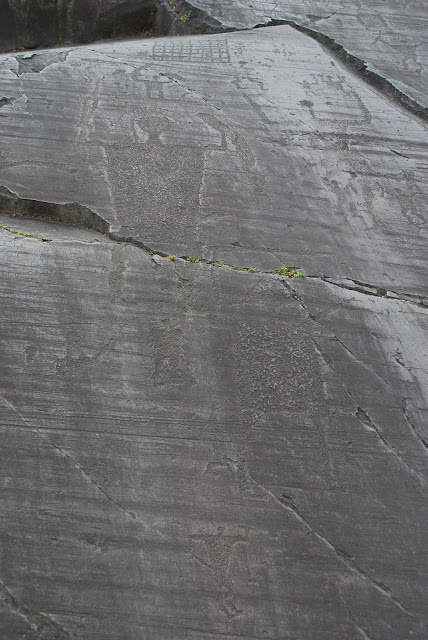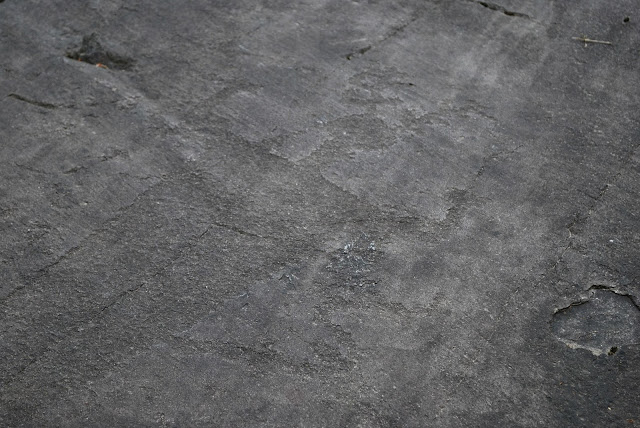 |
| Photo I took in Ljubljana, Slovenia |
Dragons capture our imaginations to this very day. They are huge and powerful, ancient beyond measure, wily and wise, both benevolent and malevolent. In the ancient East they signified the powerful forces of nature, and these mythological creatures still make impressive appearances in many a fantasy film and series (like those from The Game Of Thrones). Any Google 'image search' will instantly reveal the breadth of their modern-day devotion; in the plethora of dragon tattoos and stunning artwork that fill page after page. The fire-breathing monsters still very much ignite the sparks of our imagination.
Dragons appear in the mythological record as serpents of monstrous size, such as the great Serpent of Nordic myth who encircles the human realm of Midgard, gripping his tail in his mouth. Our usage of Dragon comes from the Latin droconem (draco), itself from the Greek word dragon (drakontos) meaning serpent or giant sea-fish. Etymologists trace the word's lineage even further back to aorist derkesthai, or even the Proto-Indo-European dark - both giving the meaning of 'one who stares'. Thinking about the unblinking eyes of lizards and snakes this would seem apt.
In the tale of Lludd and Llefelys (contained within the ancient Welsh epic, the Mabinogion) mention is of made of a battle between two great dragons which symbolise the invading Saxons and the Celtic Welsh (Brythons; Britons). The tale has the British King, Lludd, dispense with the harmful, plague bearing dragons by burying a vat of mead in the centre of Briton (which turns out to be Oxford). When the dragons plunge into the mead and fall into a drunken stupour Llud has the pot, containing the sleeping dragons, buried on Mount Snowden, in modern day Wales.
 |
| Memorial stone by Asmund - check out those wings! |
Asmund Karason, of the Swedish province of Uppland, was an 11th c. AD sculptor who may well be the creator of the Urnes style of Norse art. He carved at least ten memorial stones and introduced the winged dragon into Viking art! However its use as a motif did not flourish until the onset of Romanesque art in the 12th c. AD.
In many early medieval folklore tales throughout Europe and Middle-East, the image of the knight sallying forth to slay a ‘malevolent dragon’ is a common enough theme. Variants of the myth echo across the Medieval world. In this sense the Dragon is the ultimate danger, found in outland areas, at the edge of the world, or guarding great treasures, holding back waters or imprisoning beauty and the object of the heart’s desire itself. In this sense the dragon becomes the winged monster we best know: a malevolent guardian - a force that must be overcome, perhaps reflecting human kinds' base and barbaric natures.
The most famous of these dragon slayer’s is St. George. His story originates in Cappadocia in Turkey and possibly dates from the 7th c.AD. His tale kind of sets a precedent. I often wonder if such tales were metaphors or Christianity’s triumph over paganism (or Satan according to others) or whether there did exist huge lizards which bore the brunt of dark-age and medieval ‘heroism’. Browsing medieval bestiaries there seems to be some element of truth in the latter notion. Nature was often misunderstood in the past, as is brilliantly illustrated in Flavius Philostratus’ The Life Of Apollonius Of Tyana (217AD). It’s so funny I’ve included it as part of this blog.
Now as they descended the mountain, they say they came in for a dragon hunt, which I must needs describe. For it is utterly absurd for those who are amateurs of hare-hunting to spin yarns about the hare as to how it is caught or ought to be caught, and yet that we should omit to describe a chase as bold as it is wonderful, and in which the sage, of whom I have written this account, was careful to set on record:
The whole of India is girt with dragons of enormous size; for not only the marshes are full of them, but the mountains as well, and there is not a single ridge without one. Now the marsh kind are sluggish in their habits and are thirty cubits long, and they have no crest standing up on their heads, but in this respect resemble the she-dragons. Their backs however are very black, with fewer scales on them than the other kinds; and
Homer has described them with deeper insight than have most poets, for he says that the dragon that lived hard by the spring in Aulis had a tawny back (but other poets declare that the congener of this one in the grove of Nemea also had a crest, a feature which we could not verify in regard to the marsh dragons).
[3.7] And the dragons along the foothills and the mountain crests make their way into the plains after their quarry, and get the better all round of those in the marshes; for indeed they reach a greater length, and move faster than the swiftest rivers, so that nothing escapes them. These actually have a crest, of moderate extent and height when they are young; but as they reach their full size, it grows with them and extends to a considerable height, at which time also they turn red and get serrated backs. This kind also have beards, and lift their necks on high, while their scales glitter like silver; and the pupils of their eyes consist of a fiery stone, and they say that this has an uncanny power for many secret purposes. The plain specimen falls the prize of the hunters whenever it draws into its folds an elephant; for the destruction of both creatures is the result, and those who capture the dragons are rewarded by getting the eyes and skin and teeth. In most respects the tusks resemble the largest swine's, but they are slighter in build and twisted, and have a point as unabraded as sharks' teeth.
[3.8] Now the dragons of the mountains have scales of a golden colour, and in length excel those of the plain, and they have bushy beards, which also are of a golden hue; and their eyebrows are more prominent than those of the plain, and their eye is sunk deep under the eyebrow, and emits a terrible and ruthless glance. And they give off a noise like the clashing of brass whenever they are burrowing under the earth, and from their crests, which are all fiery red, there flashes a fire brighter than a torch.
They also can catch the elephants, though they are themselves caught by the Indians in the following manner. They embroider golden runes on a scarlet cloak, which they lay in front of the animal's burrow after charming them the runes to cause sleep; for this is the only way to overcome the eyes of the dragon, which are otherwise inflexible, and much mysterious lore is sung by them to overcome him. These runes induce the dragon to stretch his neck out of his burrow and fall asleep over them: then the Indians fall upon him as he lies there, and dispatch him with blows of their axes, and having cut off the head they despoil it of its gems.
And they say that in the heads of the mountain dragons there are stored away stones of flowery color, which flash out all kinds of hues, and possess a mystical power as resided in the ring, which they say belonged to
Gyges.
But often the Indian, in spite of his axe and his cunning, is caught by the dragon, who carries him off into his burrow, and almost shakes the mountains as he disappears. These are also said to inhabit the mountains in the neighbourhood of the Red Sea, and they say that they heard them hissing terribly and that they saw them go down to the shore and swim far out into the sea. It was impossible however to ascertain the number of years that this creature lives, nor would my statements be believed. This is all I know about dragons.
 |
| One of my Carvings based on a 7th c. AD Celtic Cross |
Ref:
Sabine Heinz - Celtic Symbols
James Graham Campbell - viking Art
John Lindow - Norse Mythology
Flavius Philostratus - The Life Of Apollonious Of Tyana
Risto Järv - The Three Suitors of the King’s Daughter

























